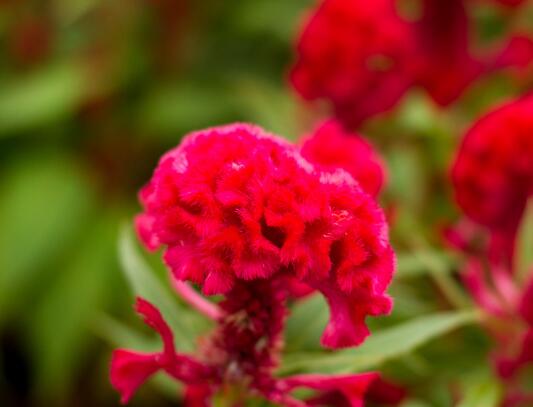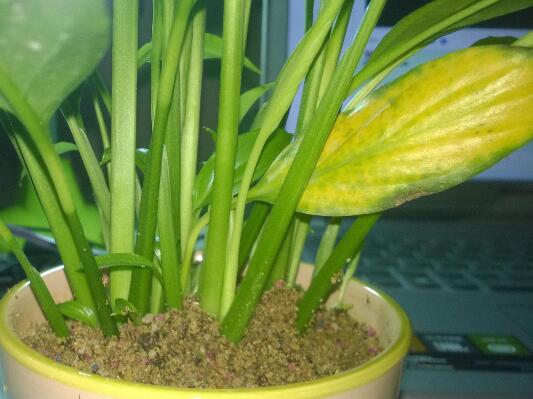When does the onion orchid bloom? the flowering period of the onion orchid is maintained / flowering in July / flowering period for 3 months
In the efficacy and function of green onion orchid, its ornamental is the most well-known role, so when green onion orchid is the most ornamental? The answer is when it blossoms. About when onion orchid blossoms, how to maintain the flowering period of onion orchid? Next, the editor will take you to learn about it.

When will onion orchids blossom
On when onion orchid bloom, in fact, generally around July every year, onion orchid florescence in July-September, there are three months, in flowers and plants in the flowering period is relatively long, but everyone in the flowering period do not just appreciate oh, maintenance is not careless, in the following is a detailed explanation of the flowering period of onion orchid, you can understand.
II. Flowering maintenance of onion orchid
About the green onion orchid flowering maintenance needs to do, we can be roughly divided into four aspects, namely, fertilization, temperature control, watering, lighting, as for these four aspects need to pay attention to, we continue to look down.
1. Fertilization management
For flowers and plants, flowering is the most nutrient-consuming period, so the timely replenishment of fertilizer at this time is the top priority. We can choose liquid fertilizer, which is more suitable for onion orchids. However, remember to dilute it with water before fertilizing, otherwise it is easy to burn the plant.
two。 Temperature control
In the flowering maintenance of onion orchid, temperature control is a more important one. Although onion orchid has strong vitality, its flowers will bloom more beautifully at a suitable temperature, and the suitable growth temperature of onion orchid is between 15-25 °C. you can pay attention.
3. Watering management
When watering onion orchids, they are usually watered once in 3-4 days, because the period of flowering is in autumn, so this frequency is about the same, but it still depends on the situation, just keep the soil dry and watering. Avoid stagnant water when watering, otherwise it is easy to have diseases and insect pests and other problems.
4. Light management
Onion orchid is a kind of light-loving flowers, so we must maintain sufficient light during flowering, and it is possible to receive light all day long, so that photosynthesis can be carried out and flowers will be more delicate and beautiful. thus it can be seen that light is a very important part in the maintenance process of onion orchid during flowering.
Is onion orchid poisonous? how long is the flowering period of onion orchid?
Green onion orchid leaves look like green onions, many people do not know green onion orchid, even if you see it, you can't name it. Green onion orchids are planted in gardens, flower beds, under forests and lace. Is that green onion orchid poisonous? How long does the onion orchid bloom? Let's get to know each other.
Are green onion orchids poisonous?
Onion orchid, also known as onion lotus, onion curtain, Amaryllidaceae, bulbs are poisonous, the appearance of onion orchid and we often eat buckhead is very similar, buckhead and onion orchid are edible, and onion orchid bulb poisonous, so do not use onion orchid as buckhead. However, green onion orchid has a certain medicinal value.
Second, the flowering period of onion orchid
The flowering period of onion orchid: from July to September.
Green onion orchid blossoms from blooming to falling, each flower can bloom for about 2-4 days, and the flowers can only last 1 day if the sun is exposed to the sun for too long.
Third, green onion orchid maintenance experience
1. Like sunny, semi-overcast and low-humidity, fertile, sticky and well-drained soil. It is hardy, it can keep evergreen in the Yangtze River basin, and it can survive for a long time below 0 ℃. Under the condition of about-10 ℃, it will not be frozen for a short time, but it may freeze to death for a long time. Like fertile soil, resistant to semi-shade or low temperature environment. The main methods are ramet and sowing, but in order to blossom in the second half of spring planting, separate planting bulbs have the greatest grasp. Onion orchid is easy to divide balls naturally and propagate easily. Cultivation in Huang-Huai area should pay attention to proper protection against cold in winter. In the hot summer season (the daytime temperature is above 35 ℃), if it is maintained in direct sunlight, it will grow very slowly or go into a semi-dormant state, and the leaves will slowly turn yellow and fall off due to burns.
2. it is mainly ramet and sowing, but in order to blossom in the second half of spring planting, separate planting bulbs have the best grasp. Onion orchid is easy to divide balls naturally and propagate easily. Cultivation in Huang-Huai area should pay attention to proper protection against cold in winter.
The above is onion orchid poisonous and onion orchid florescence introduction, onion orchid is poisonous, so watch or breed to pay attention to some, especially parents with children should pay more attention.
What's the use of safflower onion orchid? pictures of safflower onion orchid
Safflower onion orchid is a plant belonging to the genus Allium of Lycoris family. It belongs to the category of herbs, and the flowers are rose or pink. And its whole grass and its bulb can be used as medicine, with the effect of heat dissipation and detoxification and promoting blood circulation and cooling blood. Let's let the editor introduce the use of safflower onion orchid and the appreciation of the picture.
It likes the warm, moist and sunny environment, and its cold resistance is also slightly poor. It is most suitable for sandy soil with good drainage and rich humus. It is a plant with high ornamental value and medicinal value.
General safflower onion orchid should be propagated by seed, can also be planted by ramet or bulb, can be carried out all year round, but also should be best in spring, as long as the bulb rises, it will be easy to survive if it is watered with proper humidity, and when digging the bulb, be careful not to let its bulb get hurt, if the bulb has already begun to sprout. After the branch should be fully watered, it can also blossom.
* it is easier to enjoy the robust maintenance and management of safflower and onion orchid. In the garden, we can choose the sunny, warm and sheltered place as the best, and in its growth and flowering period is 3-4 times of topdressing, it will be able to make it leafy and blossom. Cultivated in the open field in the middle and lower reaches of the Yangtze River, after severe frost in winter, the old leaves withered and the bulbs could stay for the winter and blossom as usual the following year.
Four cultivation sites should have plenty of sunshine, it is not easy to divide the bulbs in the shade and it is not easy to blossom. Fertilizer can be used organic fertilizer such as oil meal, compost or nitrogen, phosphorus, potassium fertilizer, once every 3 months, according to the proportion of phosphorus and potassium fertilizer, can promote bulb hypertrophy, good flowering. When the plants are clustered and crowded, the ramets must be forced. Strong in nature, drought-resistant and high-temperature resistant, easy to cultivate, and the suitable temperature for growth is 22 ~ 30 degrees.
* what is the ornamental value of red onion orchids: red onion orchids belong to ornamental plants introduced and cultivated in China, and the plants are low, and the flowers are numerous, and his flowering period is generally from June to September, which belongs to perennial herbs. the flower color is also gorgeous, and the nursery shape is suitable for ornamental. It is most suitable for clump planting in flower beds, flower mirrors and grasslands. It can also be used as a potted plant for indoor viewing. It is a semi-negative ground cover flower widely used in gardens. Often used as potted plants, gardens, flower bed ornaments.
- Prev

When does the cockscomb blossom and maintain its flowering period / 3 months from July to September?
Celosia cristata is a kind of highly ornamental flower, which can be seen in many gardens in our country. Its most ornamental moment is when it blossoms, so when will it bloom? How to maintain the flowering period of Celosia cristata? Next, the editor will take you to learn about it.
- Next

What if the dahlia leaves turn yellow / pay attention to 5 points to easily solve / control the light
Dahlia is a highly ornamental plant with a very gorgeous outside. Because of this, if there is a little flaw will affect its overall beauty, such as yellowing leaves, it will look very abrupt, about the dahlia leaves yellowing what to do? Next, the editor will take you to learn about it.
Related
- Fuxing push coffee new agricultural production and marketing class: lack of small-scale processing plants
- Jujube rice field leisure farm deep ploughing Yilan for five years to create a space for organic food and play
- Nongyu Farm-A trial of organic papaya for brave women with advanced technology
- Four points for attention in the prevention and control of diseases and insect pests of edible fungi
- How to add nutrient solution to Edible Fungi
- Is there any good way to control edible fungus mites?
- Open Inoculation Technology of Edible Fungi
- Is there any clever way to use fertilizer for edible fungus in winter?
- What agents are used to kill the pathogens of edible fungi in the mushroom shed?
- Rapid drying of Edible Fungi

